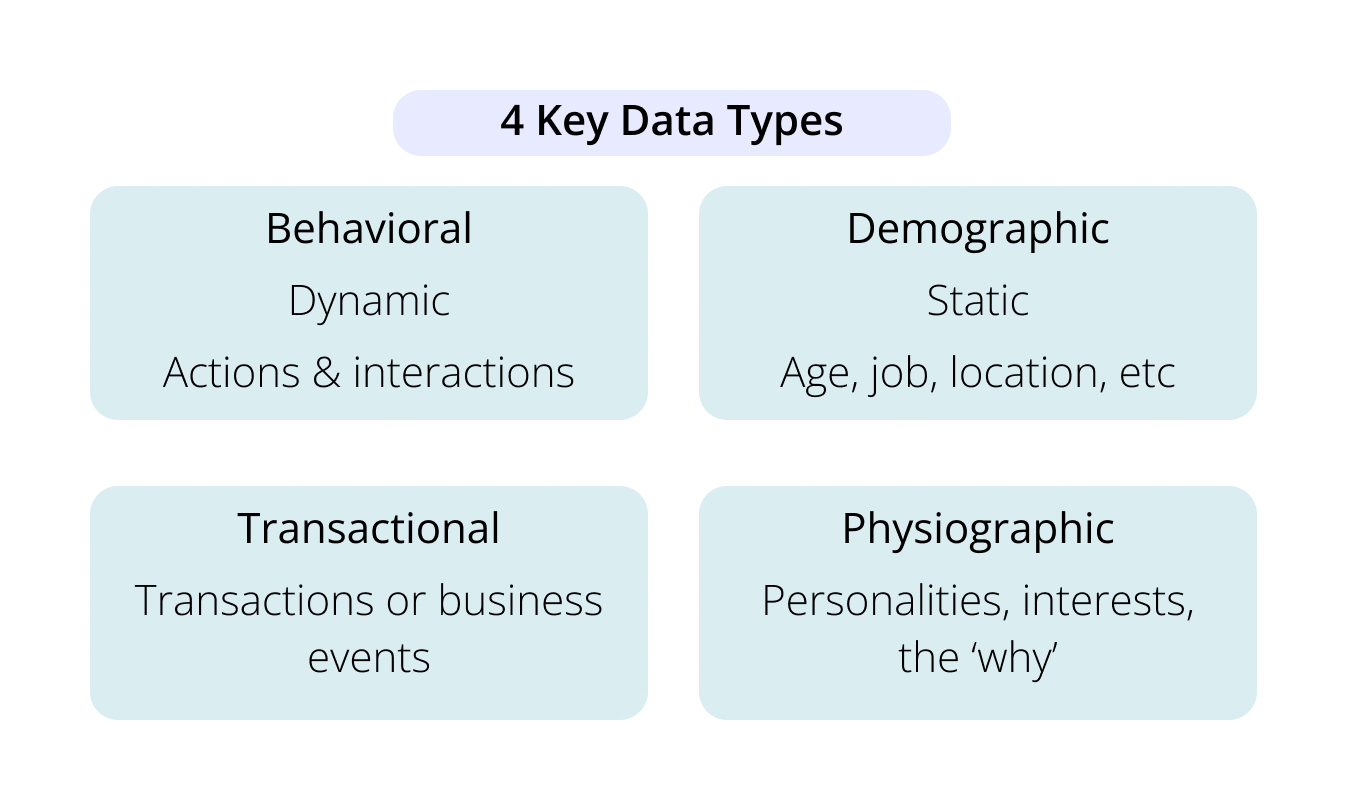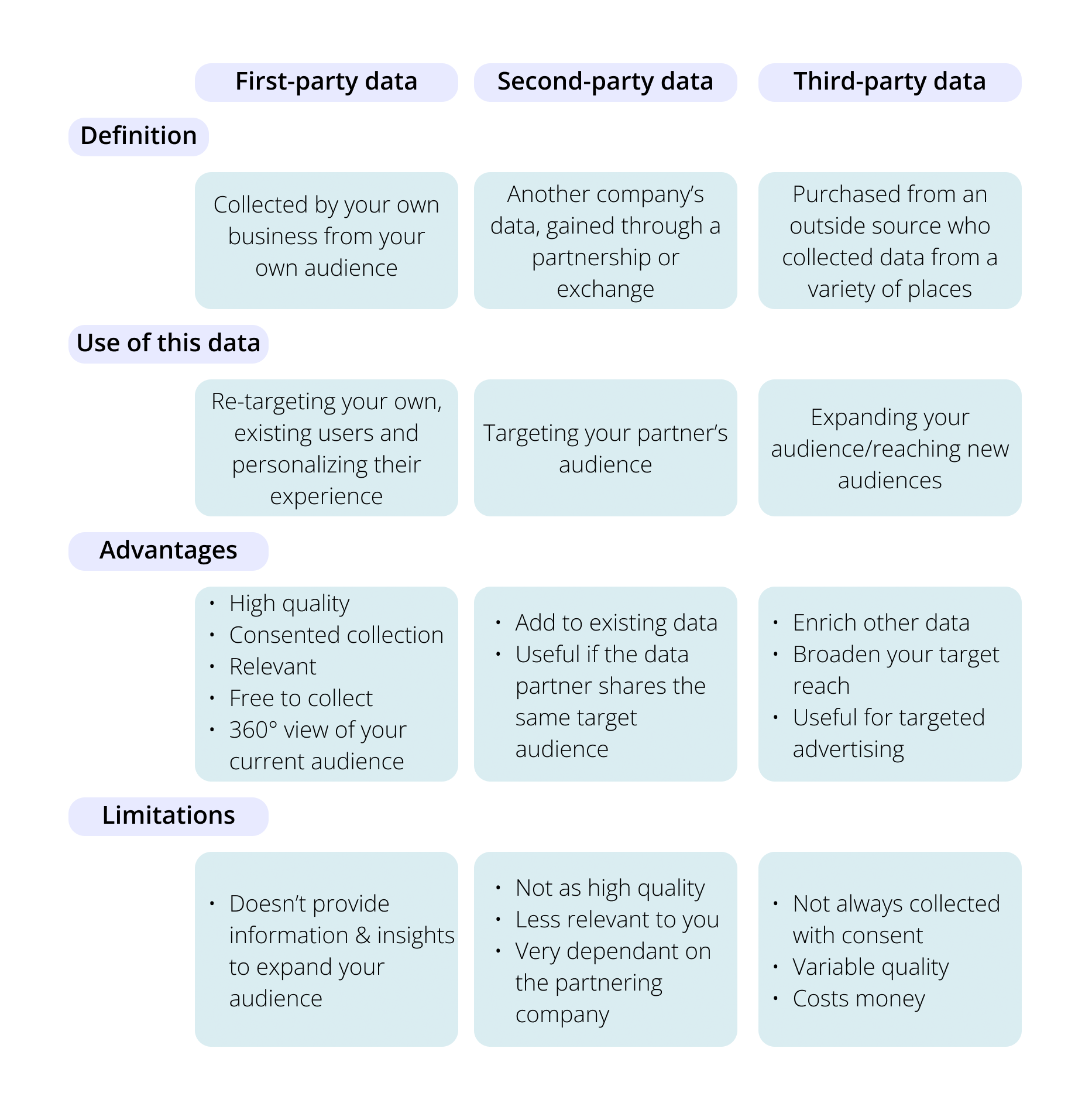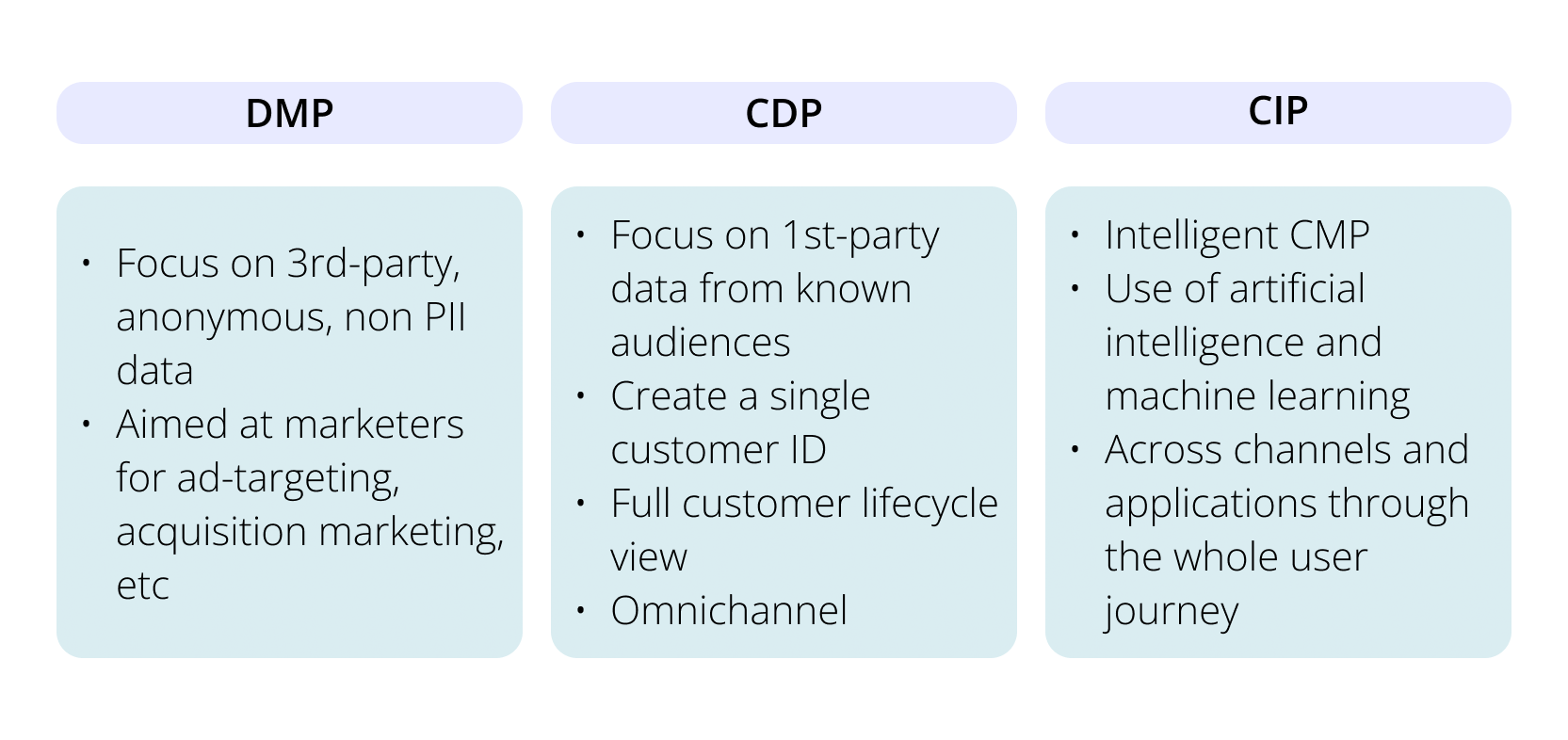Data is a powerful tool for businesses, that much is a given. But what’s not a given is the continuous data collection that digital publishers will have access to in the future.
Many third-party data points that have been used by marketers for over 20 years are being cut off, big names such as Google and Apple are turning cookieless and tightening data privacy regulations are making it even easier for online users to decline consent on the cookie banner...
Without these cookies, not only will advertising inventories be sold at a 2 times lower cost (or even not at all), but data can’t be collected to track marketing campaigns or understand user interests.
At the same time, online consumers today expect their experience to be personalized, which necessarily requires the collection and use of reader’s data.
It’s a tough situation! But this white paper is here to explain the solution - a first-party data strategy and registration wall - allowing you to take control of your data collection and overcome the many challenges presented by the cookieless future!
- What is data, and what’s the difference between first-, second- and third-party data?
- What about collecting, storing, transforming and combining data collected?
- Why should you employ a first-party data strategy?
- How can a registration wall help you collect this data?
- Best practices for collecting first party data with a registration wall
1) What is data, and what’s the difference between first-, second- and third-party data?
Back to the basics. Before getting started with any data strategy, it’s important to understand what different types you’ll be dealing with.
In general, data are units of information that are collected and examined to make more informed business decisions. There are four main ‘types of information’ that you can gather:
Behavioral = refers to information produced as a result of actions and interactions. This information isn’t static (unlike address, date of birth, etc). It tracks such things as how someone uses your website, what pages are visited, games played, items clicked on.
Demographic = statistical data about someone’s characteristics, including age, gender, location, occupation, income, etc. This is usually collected through forms filled out in the registration process.
Transactional = information about transactions/business events between you and customers, such as subscription purchases, payments, invoices for monthly payments, etc.
Physiographic = this is the hardest data to collect but can be very powerful when combined with the other data types. It refers to information about personality, interests, attitudes, values and, more generally, why a user completes an action or reacts in a certain way. This data adds emotion to the static demographic information.
Note that this is only touching the surface, and third-party data providers will list many more data types that they can offer. However, these are perhaps the most relevant for online content-producers and should definitely be the focus of a data strategy to begin with.

We can now divide data into 3, categorized primarily by where the data comes from: First-, second- and third- party
- First-party data
First-party data is that which is collected by a company from its own sources, making them the primary owners of this data. It’s collected directly from your audience when they engage in your content, such as by visiting your site, using your app, calling your help centre, subscribing, etc.
There are two central types of first-party data:
Declarative data represents any information that your users directly tell you, such as their name, date of birth, email address, etc. This is usually collected through forms or by signing up to a newsletter.
Behavioral data refers to what you collect when audiences use your site. It can include information such as their reading habits, time spent on a page and how often they visit your site.
As this data is collected by you, it’s considered very valuable for a number of reasons:
- It’s highly relevant to your business
- It’s accurate and of a high quality as you know how its been collected
- First-party data is free of charge, with no need for partnerships or purchases
- It’s compliant with data privacy laws (such as GDPR) and is the most transparent data-type because you own and collected it yourself
2. Second-party data
This refers to data that can be purchased from another company like your own. This could be achieved through second-party data partnerships or data marketplaces where you exchange data with other companies.
Second-party data can be beneficial to add to your own data collection, but it’s only valuable if you can find a relevant company to exchange with. There’s little point in partnering with another business who has a completely different audience and market to you as this data won’t be relevant to your strategies. What’s more, whilst you know and control the collecting of first-party data in your own company, it’s hard to be fully aware of the value or accuracy of anyone else's data.
3. Third-party data
This type of data is purchased from a 3rd-party data company, such as Lotame, Onaudience, Oracle, Eyeota, to name a few. Third-party data can be extremely useful for enriching your first-party data, widening your audience and for targeted advertising. It’s usually focussed on behavioral and demographic data, but this varies considerably from company to company.
However, there are a couple of things to bear in mind when choosing a third-party data provider.
- Are they compliant with privacy regulations such as GDPR and CCPA? The company should be clear on this point, otherwise contact them or look elsewhere for your data as this is hugely important
- Is their data valuable? With 1st-party data, you know that it’s relevant to your business and is reliable to gain insights from. With someone else’s data though, it’s hard to check the quality. However, there are independent market standards and validation checks that should give you an idea of where that provider stands compared to market averages
- What data do they provide? Their focus might be on data that isn’t really relevant or useful to you, so make sure this isn’t the case
- Is it a good value for money? The pricing is marked at Cost Per Mille (CMP) and you should ideally compare this across a few providers before making a decision (and remember that 1st-party data is free!)
- Do they have a good reputation? You might answer this question by researching who they’ve worked with, understanding their sources and asking around to see which 3rd-party business others work with.

2) What about collecting, storing, transforming and combining data collected?
Collection - data collection is usually achieved online via actions and interactions on your website, app, etc. But information can also come from call centers, email exchanges, in-person sales, and more depending on your business. In particular, email collection, account creation and logged-in users are highly valuable in gathering first-party data. These can all be put in place through employing a registration wall (which also comes with a handful of other benefits).
Storing and transforming - this is an important part of the whole process as a poor method of storing data will make analysis and activation extremely difficult, which is ultimately the reason why you’re following this strategy in the first place. A management platform of some type is very useful at this stage and, by choosing the right one to match your objectives, your first-party data strategy becomes a whole lot easier.
DMP vs CDP vs CIP (it’s confusing, we know!)
What is a DMP?
A Data Management Platform is used to gather, group and classify 2nd and 3rd party data. The focus is therefore on anonymous data rather than PII (Personally Identifiable Information). DMPs are aimed at advertisers, mainly for ad targeting and acquisition marketing. Some DMP software providers include Lotame, On Audience and Permutive (for publishers).
What is a CDP?
A Customer Data Platform is a data management system with a unified database that allows for collection and combining of data from multiple sources in order to form single user profiles. Here, the focus is on first-party data, from known, identifiable customers, but other data can be integrated too. CDPs look at the full, omnichannel customer lifecycle and create 360-degree user profiles. Some CDP companies include Segment, Bloomreach and Insider.
What is a CIP?
A Customer Intelligence Platform is arguably a modernized, ‘intelligent’ version of a CDP. A CIP gathers, combines and analyzes user data in order to identify individuals across channels and applications at every stage of their journey. But, differently to a CDP, it involves machine learning and AI to leverage data modeling algorithms. This allows you to enrich your own data and gain a complete picture of your users. A few CIP software providers include Zeotap, Oracle Data Cloud and Accenture Insights Platform

Combine data - firstly, integrate any data collected into this new storage method. Next, you can consider combining third-party data with your own information. Despite the value of first-party data, it is limited in that it only includes information from visitors to your site. 3rd-party data, however, can help fill the gaps here, allowing you to find new customers and expand your audience. As we mentioned, the reliability of third-party data can sometimes be questioned and it’s not as relevant to your site as 1st-party data, but when combined with that you’ve collected yourself, it can be very powerful. Enrich your own data, fill in gaps in user profiles and reach new audiences.
3) Why adopt a first-party data strategy?
Without a doubt, data has been the power source for the internet economy over the last 20 years, with marketers being dependent on it to inform their strategy and monetize from advertising. However, as data protection and privacy becomes increasingly important, this model is at risk and publishers are being forced to find alternatives.
One of the most valuable models to employ, that benefits both the publisher and their audience, is a first-party data strategy. Not only is it owned by you, but it’s guaranteed to be of a high quality and relevant to your business. Not to mention the fact that it’s very cost effective.
- Changes to web browsers mean a cookieless future is fast approaching and digital publishers need to find an alternative to third-party data. First-party data collected through your own tools, such as conversion walls, is one such alternative.
- As you own first-party data, and are responsible for gathering user consent before collecting it, it’s the most transparent and compliant option in terms of privacy laws.
- Personalization is pretty much an expectation in today’s digital world, but this of course requires an understanding of who the user is, what interests them and what they consume. First-party data is therefore important for building a 360° view of each individual user, personalizing their experience which, in turn, increases engagement and their propensity to subscribe in the future. It’s a win-win!
4) How can a registration wall help you collect this data?
So, now you know what data is and that first party data should be a priority for you to collect, but how do you go about doing this?
Think With Google published an article online explaining ‘How to unlock the power of first-party data’, outlining 3 key elements. One of these is to create a fair and transparent value exchange.
“...for a fair and helpful exchange to occur the company must offer something useful or valuable to the customer. This could be information, assistance, premium content, an app, or a special offer — as long as it incentivises customers to share a bit more information about themselves.
Provided the business is transparent and responsible with how it uses that data this creates an ongoing value exchange between company and consumer. The consumer gets something of value, and the company learns more about their audience - allowing them to deliver better experiences and more effective marketing through the use of the first-party data”
This value exchange is exactly what a registration wall involves.
Generally, a wall is employed on a website to block content and ask visitors for a value exchange in order to gain access. Whilst a paywall requires a user to pay to access content, a registration wall asks a user to create a free account before being able to view content.

Once their account is created, the user will login at every visit to your site, allowing you to collect first-party data in the registration form, track their behavior across devices and progressively collect other data points as they interact with your content.
- Track how users engage with your content: normally, visitors to your site are anonymous and it’s difficult to collect valuable data. However, if every user is required to create an account, and login on every visit, you’ll gain an understanding of their behavior, habits, interests and needs as well as put all this information to a single user profile.
- Form in the registration wall: when a user creates an account on your site, they’ll need to provide some basic information at your request. This is usually demographic data such as gender, date of birth (age), location, job title, etc, as well as their email address. Even this small amount of data will be useful to you, providing the foundations of a user profile that can then be gradually added to.

- Increase engagement: A better user experience, personalization, access to more content... this will all increase a user’s level of engagement which directly correlates with revenues
- Create user segments: with data collected from registered users, you can create audience groupings and adapt a user’s experience accordingly. This can be particularly useful if you’re using a registration wall as a soft conversion step before a paywall. For B2B companies, this segmentation also means that any products that you might launch in the future can be directly targeted at potential customers on your site, and in a way that they seem most responsive to.
- More affordable option: a registration wall can be very inexpensive, providing a particularly useful option for smaller businesses that will enable you to build a qualified, loyal audience who provide a higher ARPU than anonymous visitors
- Customer loyalty: when it comes to creating a community of members on your site, many assume they have to be paying users (i.e. as part of subscription). However, building a registered community can be free for the users, help to keep them loyal to your company as well as build a closer reader-media relationship. As you engage with users and provide them with value, your audience will grow organically.
A registration wall is therefore an extremely powerful tool for any online company in many ways, but particularly as a method of collecting valuable first-party data.
It’s important to note here that walls, in all their forms, aren’t solely reserved for news journalism websites. In fact, any content producer online can use a wall to ask users for a value exchange, from e-learning platforms and video streaming sites to brands and social media. If you want to see some registration walls currently being used by successful companies, take a look at our ‘Best registration wall examples of 2022’ article.
5) Best practices for collecting first-party data with a registration wall
We’ve come up with 5 best practices to make the most out of your registration wall and optimize the user experience with first-party data:
Ask users for permission to collect first-party data (this is also a legal requirement in the EU)
- Be clear and visible when presenting a consent banner to users, giving them the option to decline.
- Be honest and truthful, don’t hide your reasons for collecting data (trust is the foundation of your relationship with readers).
- Provide value for users, highlight the enhanced user experience that comes with data collection or give other benefits.
- Finally, provide users with an account preference center where they can configure data collection settings later on.
Ask users for registration early on
Even if this simply involves asking for an email address, the earlier you register a user, the more information you can learn about their profile. However, be aware that a balance needs to be found between frustration and engagement - discover more here.
Ask for minimal information in the registration process, gradually collecting more as they interact with your content. You could even consider offering registration through Google, Facebook or another social media site to gather data without the user needing to fill out another form.
Create real value for your registered users
The whole idea of a registration wall as part of a first-party data strategy is that you’re creating a value exchange - you benefit from being able to collect data and insights from users in exchange for them receiving a better experience on your site.
This can take many forms and depends on your content-type and business model, but here are some ideas:
- Allow users to save content for later and resume where they left off
- A personalized experience, with adapted content recommendations and an account space
- Synchronize content consumption across devices
- Create functionalities to allow users to follow authors or topics, like The Globe and Mail
- Allow members to comment/debate on content, just like The Independent
- Interactive content, such as allowing users to save content in different 'folders' or access quizzes, games or videos
- Exclusive content, additional content or access to content full stop
- The chance to support your business, particularly for publishers who are 'known' for free, independent journalism. The Guardian definitely falls under this category, informing users that registering helps the publisher without them having to pay a penny
Embrace experimentation and A/B testing
Unfortunately, you’re unlikely to design the optimal journey for every one of your user segments first time round. Testing is the way forward here, and A/B testing is particularly useful to directly compare two options in terms of their performance. This goes for every aspect of every stage in the user journey. For example, the form in the account creation process is extremely important and you might want to experiment with the amount of information required of your users, what questions you ask, how it appears on the page, whether you offer registration using an existing social account (Google, Apple, Facebook, etc), and more.
Personalization
This is the key to building a trusting and meaningful relationship with your audience, which is the foundation of high reader revenues. Even something as simple as directly addressing a reader by using their name within a wall will make a difference and help your users to feel like a valued individual rather than someone who is simply part of a larger audience on your site.
By collecting 1st-party data, you will have all the knowledge needed to fully customize user journeys (particularly after registration), and it would be a greatly wasted opportunity to not profit from this benefit of a first-party data strategy. Remember: relationships lead to revenue.
Want to discuss your business and how a registration wall could benefit you? Let's book you in for a free demo!

